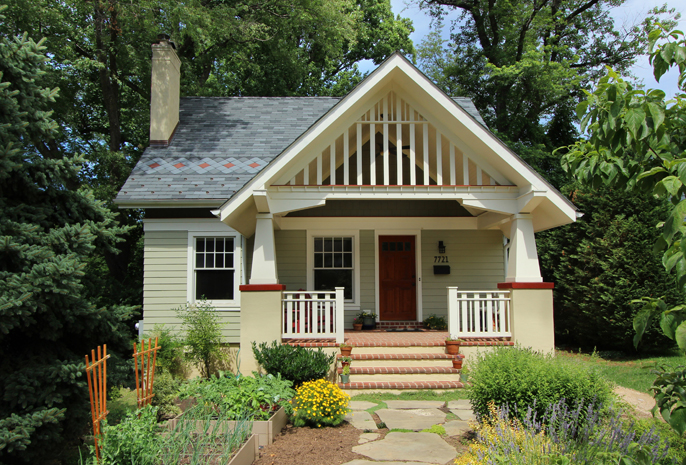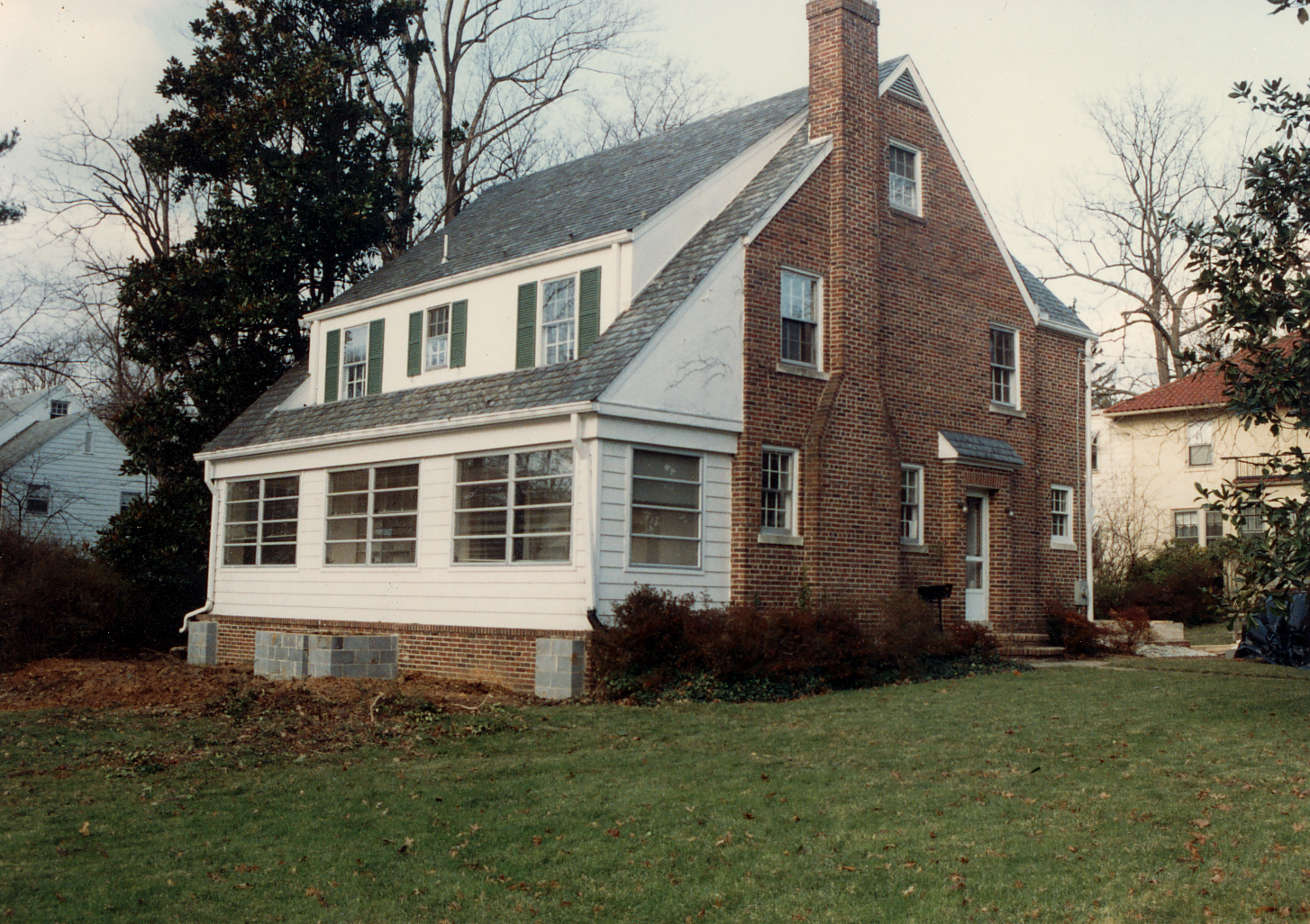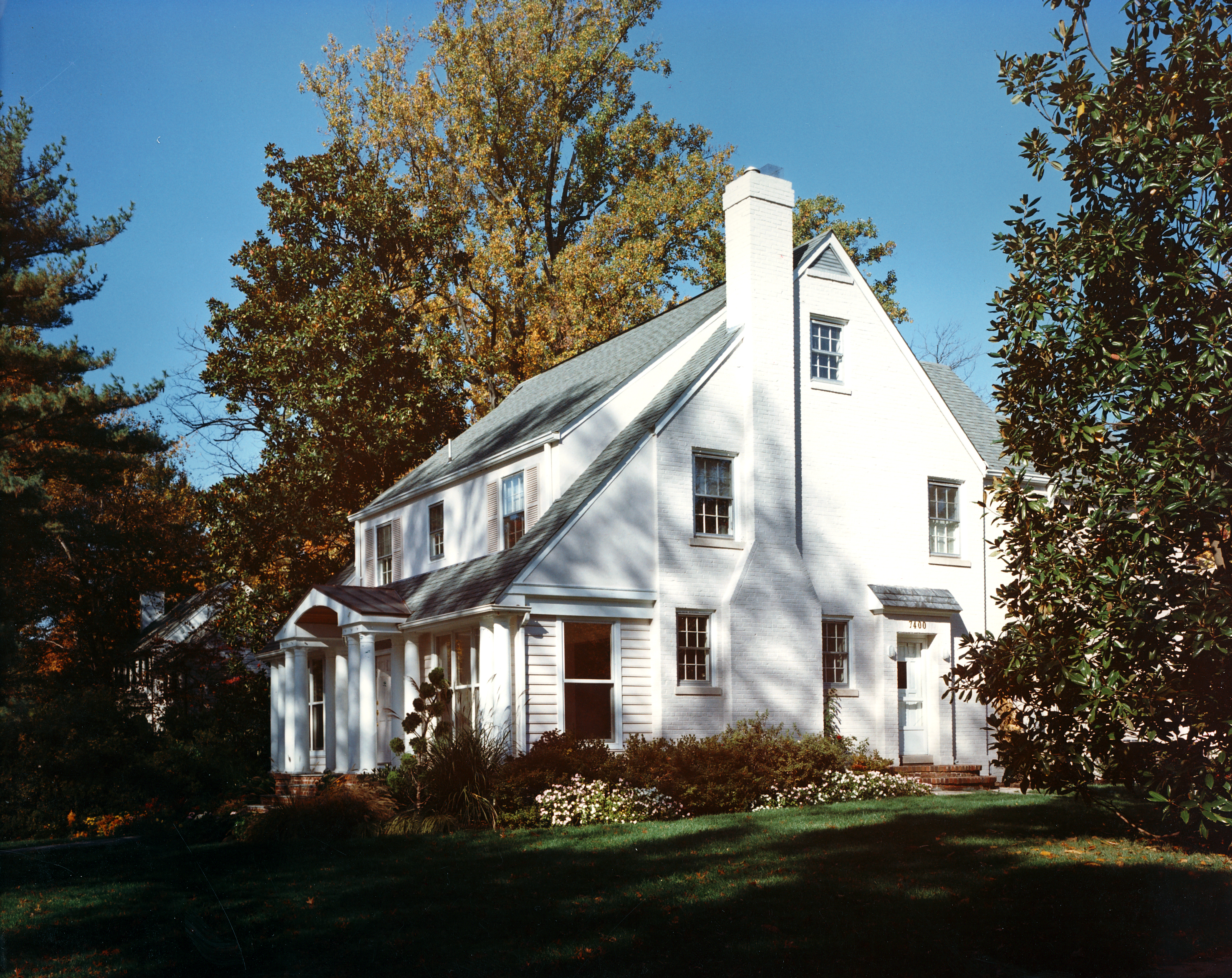Fun with color! Part II
Part II – Exterior Colors
Last month we talked about the benefits of a thoughtful color scheme, and how to get started. This month we will focus on choosing exterior colors.
Most homeowners are surprised to learn just how many colors their house can accommodate without getting carried away or becoming garish. Consider the following image of a modest cottage with a very simple massing and roofline.
Would you believe that this home has 5 exterior paint colors and three roof slate colors? There are two siding colors, a foundation color, a trim color and an accent color. In this case, those colors were used to add depth and detail to an otherwise simple composition.
The number of colors and nature of the color palette should reinforce the strengths of the building design, and minimize any liabilities. In the case above, a simple but thoughtfully detailed exterior lent itself to multiple colors. The two siding colors distinguish the first floor from the second floor, giving the house more presence and providing added visual interest to a simple house shape. The accent color calls attention to details in the trim that make the porch more engaging to visitors.
Houses with multiple additions may be helped by a multi-color scheme that visually breaks the complicated massing into more manageable chunks. Alternatively, a compact home with mismatched materials may benefit from a single dominant paint color to help unite the composition.
 The use of two siding colors helps to establish hierarchy and organizes the various elements of this home into coherent pieces.
The use of two siding colors helps to establish hierarchy and organizes the various elements of this home into coherent pieces.
The massing of this home is made more cohesive by painting the brick to match the siding and porch trim.
Consider the style of the home when making decisions about the color palette. Will additional contrast help or detract from the character narrative? Will lighter colors help shadows convey detail and depth in the façade, or would a darker color do more to reinforce the style of the home?
The single white color of this home enhances shadow lines, highlighting the details in the brickwork.
The dark brown and green color palette for this cabin emphasizes a connection to the wooded context.
A common misconception about color selections is that they come at the end of the process. In the case of exterior colors, the timing for selecting the color palette is often driven either by the windows or the roofing; both are typically ordered at the very beginning of a project.
More and more houses are built using vinyl or aluminum-clad wood windows. These surfaces are becoming more available in a wide range of colors, but they aren’t meant to be painted after market. So once you pick a color you will have to live with it. This leads many homeowners to go with white to buy more time in making color selections. While white windows are most likely to work well with a broad range of color palettes, they can be stark and may represent a missed opportunity to add depth to the exterior of the home.
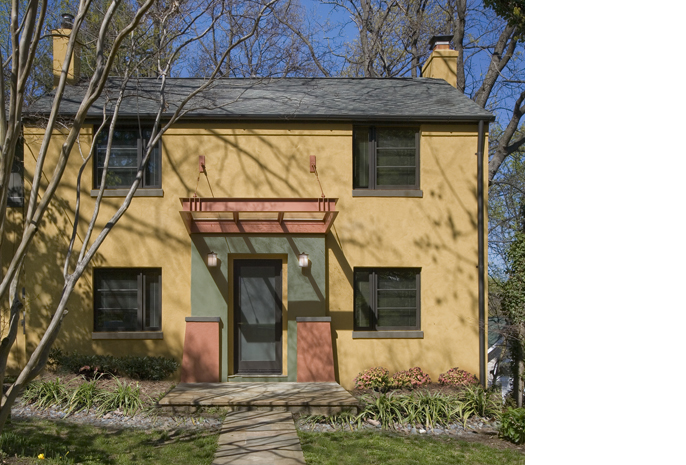 The dark window color on these aluminum-clad wood windows had to be selected early in the construction process, before many of the other elements were in place. White windows would not have been as successful as the charcoal color chosen.
The dark window color on these aluminum-clad wood windows had to be selected early in the construction process, before many of the other elements were in place. White windows would not have been as successful as the charcoal color chosen.
The roof is another material that isn’t likely to change colors once installed. Roofing colors tend to be much more limited than masonry, window and paint colors. Fortunately, most roof colors have a range in them, providing maximum flexibility for coordinating with paint colors. Still, the roofing is typically ordered very early in the process and long before other exterior finished surfaces are installed and ready for paint samples.
While this post focuses on paint colors, roofing is another place where going bold with the colors can provide added character at no extra cost. Adding a stripe of accent color, or a decorative band to your roof can break up a large surface, or using a bold color can turn a dominating element into a character-defining feature. When thinking about roof colors, consider that lighter colors will be more reflective (and thus more energy efficient) but darker colors will do more to hide stains from leaves if you are in a wooded location.
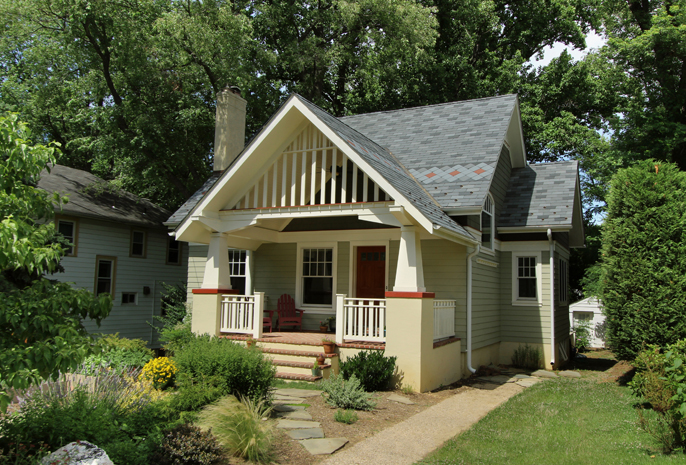 The decorative band in the slate roof provides added visual interest to an otherwise simple roofline and picks up on the red accent color from the porch.
The decorative band in the slate roof provides added visual interest to an otherwise simple roofline and picks up on the red accent color from the porch.
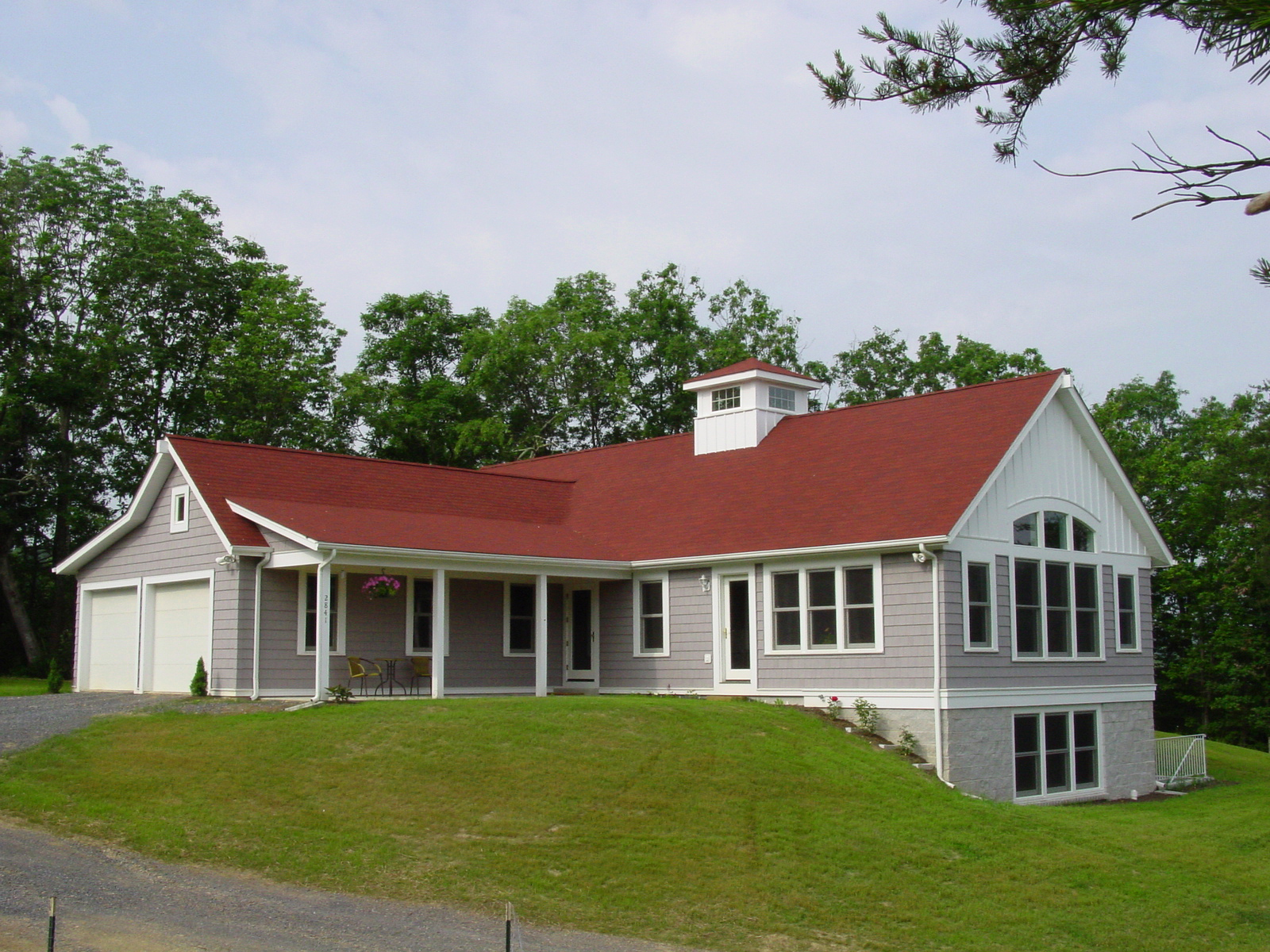 A red roof adds “free” character to this house, and references the rural context of the home.
A red roof adds “free” character to this house, and references the rural context of the home.
Brick and stone both come with several considerations when making color decisions. If you have or plan to use stone, be sure to have samples on hand when choosing colors, as the stone may have strong tones that don’t pair well with some color schemes. For example, blue stone pavers won’t work as well with warm earth tones as they will with cooler color schemes. Brick with a large range of colors will be more versatile, but may do better with fewer competing paint colors, while a more monochromatic field brick may limit the color options but work better in a multi-color scheme. Be sure to consider the color of the grout in the decision making process.
 The stone and slate roofing materials were both considered when selecting the siding color of this home.
The stone and slate roofing materials were both considered when selecting the siding color of this home.
Fixtures, gutters and downspouts add a final layer to the exterior color scheme. Your builder is likely to assume the gutters and downspouts are white, unless instructed otherwise. Like the windows, this is another place where color can give you added character at little or no cost, though color choices are limited.
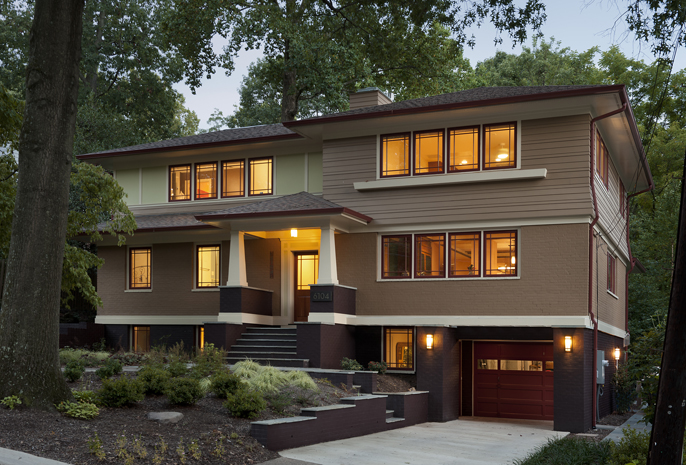 The dark gutters and downspouts on this home work well with the red window frames and dark foundation colors.
The dark gutters and downspouts on this home work well with the red window frames and dark foundation colors.
In our overview last month, I noted that you should never rely on a computer screen to accurately reflect the appearance of a paint color. That said, we often use digital models of our projects to help clients visualize how a color scheme might look on the completed house. This is often helpful for making those early window and roofing selections before the house has been built, understanding that the precise color selections should be made after painting multiple samples on the house.
 A digital rendering can be a valuable tool in making exterior color selections.
A digital rendering can be a valuable tool in making exterior color selections.
To repeat our closing last month, don’t get too caught up on rules. Trust your eye. Think about the character of your home and what colors will reinforce that character narrative the most. Don’t be afraid to be bold and let your personality show through. And again… have fun with it!
– Shawn Buehler, Principal

